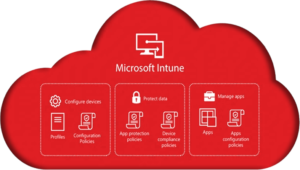If you’ve been following the news or the Windows Management Experts blog, you probably have heard some buzz around “low-code and no-code” app development. Indeed, it’s an exciting time to be in the software world, with the low-code and no-code industry currently valued at approximately $4 billion.
In our previous post on the subject, we discussed the industry as a whole, and how Microsoft is leading the way for enterprise-level, low-code solutions with the Power Platform, Power BI, and Dynamics 365. This week, we will explain some specific differences between low-code and no-code platforms.
Major Differences between No-Code and Low-Code
True to the name, no-code platforms do not require users to have prior programming knowledge in order to get started. They typically use drag-and-drop or menu-based interfaces.
Low-code platforms, on the other hand, require a basic understanding of programming, and often involve copying and implementing instances of code, or utilizing if-then functions and conditional expressions to create a series of actions to run in sequence. Low-code platforms allow a developer to create complex custom applications in a matter of hours or days, whereas traditional programming by hand would take weeks or months to complete . Low-code platforms can typically plug into your organization’s common data service (such as Microsoft Sharepoint), and as such, it is advisable to have a trusted administrator at the helm.
Advantages or Use-Cases for No-Code and Low-Code
No-code platforms are an excellent choice for managers and non-technical users. Thanks to its nearly universal usability, the no-code movement is also referred to as “citizen development.” No-code apps are perfect for use in data reporting, tracking, and analytics. If you need to create and deploy an app that will evolve with frequent updates or changes in business priorities, using a no-code platform may be the ideal solution.
One note of caution: Giving permissions for every user in your organization to create code-free applets may create a culture of “shadow IT” in which apps are being developed without developer or IT consideration. This can result in compliance issues, integration problems, and apps that use more resources than necessary.
A low-code platform serves business users and professional developers alike, and enables IT to work faster and more efficiently while allowing them to code by hand where necessary. It is capable of building out more complex applications, including apps that are business-critical. Compared to hand-coding, robust security processes are built into the platform and connectors, which adds a layer of confidence when overseeing a project.
No-Code Platforms Open Door to Low-Code Creativity
The concept of a low-code platform isn’t an entirely new idea. Microsoft launched what is largely credited as the first visual IDE (integrated development environment) in 1991 with Visual Basic. VB was considered a must-have skill for developers and IT pros in the 1990s.
More recently, we’ve seen a similar “disruption” in fields like front-end development and graphic design. Not long ago, building a business website with commerce features or complex navigational structures would require a team of programmers and weeks or months of painstaking coding by hand. Now, with SaaS companies like Squarespace, Wix, and Shopify, one can create a website and digital storefront in a single afternoon. Of course, like many low-code use cases, if you have some knowledge of programming and coding, you can boost the customization of the sites using CSS or Javascript injection. WordPress is a perfect example of a CMS that can be used with zero coding skills; however, you can do a lot more if you do have that skillset.
Similarly, creating a professional business card or newsletter used to require expensive software, a skilled designer by trade, and time spent exporting and sending files to a local print shop to have the items printed and cut for you. Today, sites like Canva enable anyone with an internet connection to create beautifully designed documents for free, and even order prints in a few clicks. In 2019, Canva, an Australian company, was valued at $3.2 billion, but this summer its valuation nearly doubled– to $6 billion. While anyone can use the program online with zero design education or premium software, users who do have access to advanced photo editing or vector graphic tools can use assets created outside of the Canva templates to create even more sophisticated documents.
The Takeaway
No-code and low-code platforms provide excellent ways to reduce your IT backlog and supercharge your business agility, and both can be leveled up and made more sophisticated when used in conjunction with the skills they are meant to replace.
Whether you want to find a talented programmer to build custom PowerApps for your business, learn new skills, or consult with a team of experts to build an automation roadmap for your business, Windows Management Experts is the gold standard in making the most of your Microsoft investment.
Call (888) 307-0133 to boost the impact of your IT strategy now!





